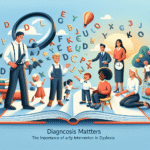
Introduction
When we think of relationships, be it romantic, friendly, or familial, what shapes our interactions? Surprisingly, one of the most profound influences is not just our past experiences or personality traits, but a concept known as attachment styles. Attachment Styles 101: What They Are and Why They Matter dives deep into the psychological framework that governs our behaviors and relationships.
Understanding these styles can transform the way we connect with others, enhance our emotional wellness, and even improve our romantic lives. Whether you’re curious about your attachment style, looking to improve your relationships, or seeking insight into your loved ones, this article promises valuable insights. Let’s embark on this journey together!
What Are Attachment Styles?
Attachment theory was first developed by psychologist John Bowlby in the mid-20th century. It posits that our early interactions with caregivers shape the way we relate to others throughout our lives. These interactions lead to the formation of one of four primary attachment styles:
- Secure Attachment
- Anxious Attachment
- Avoidant Attachment
- Disorganized Attachment
Let’s delve into each attachment style to understand how they manifest in adult relationships.
Secure Attachment
Individuals with a secure attachment style typically feel comfortable with intimacy and are generally warm and loving. They have a positive outlook on relationships and can easily express their feelings.
Characteristics:
- Open communication
- Trust in partners
- Emotional regulation
Case Study: Sarah and Tom
Sarah, who has a secure attachment style, and Tom, who initially displayed anxious tendencies, exemplify how different attachment styles can harmonize. Sarah’s ability to reassure Tom and maintain open lines of communication helped him feel secure and loved, gradually easing his anxiety.
Analysis: Their relationship illustrates that secure attachment can create safety, enabling partners to heal and grow together.
Anxious Attachment
Individuals with anxious attachment often seek high levels of intimacy and show great concern about their partner’s availability. They may fear abandonment and might oscillate between clinginess and deep insecurity.
Characteristics:
- Heightened sensitivity to partner’s moods
- Need for constant reassurance
- Tendency to overanalyze situations
Case Study: Jessica and Mike
Jessica, who exhibits anxious attachment traits, often finds herself questioning Mike’s love for her. After a misunderstanding, she bombarded him with messages seeking reassurance.
Analysis: This case underscores the challenges of anxious attachment; Jessica’s fears often lead her to misinterpret Mike’s actions, creating unnecessary tension.
Avoidant Attachment
Avoidantly attached individuals tend to prioritize their independence and can appear emotionally distant. They might have difficulty opening up or expressing their feelings and can sometimes seem uninvested.
Characteristics:
- Preference for emotional distance
- Reluctance to engage in deep conversations
- Fear of intimacy
Case Study: Linda and James
Linda, who possesses an avoidant attachment style, struggles to connect with James, who values emotional closeness. His attempts to draw her out lead to frustration and emotional withdrawal on her part.
Analysis: This scenario illustrates how avoidant attachment can create barriers in relationships, often leading to feelings of confusion and isolation.
Disorganized Attachment
Disorganized attachment is often a result of trauma or inconsistent caregiving. Individuals with this style may display a mix of anxious and avoidant behaviors, creating a chaotic, unpredictable approach to relationships.
Characteristics:
- Fear of intimacy paired with a desire for closeness
- Emotional instability
- Difficulty trusting others
Case Study: Kevin and Emily
Kevin’s disorganized attachment manifests in conflicting actions; he seeks closeness but is terrified of being hurt. Emily tries to help him open up, but his unpredictable responses leave her feeling frustrated and confused.
Analysis: This case highlights the complexity of disorganized attachment and its impact on relational dynamics, often leading to turmoil if left unaddressed.
Why Attachment Styles Matter
Understanding the intricacies of Attachment Styles 101: What They Are and Why They Matter offers crucial insights for personal development and relationship enhancement. Here’s why recognizing these styles is essential:
1. Improved Self-Awareness
By identifying your attachment style, you can better understand your reactions in relationships, contributing to personal growth.
2. Enhanced Relationship Dynamics
Recognizing your partner’s attachment style can foster empathy and effective communication. This awareness can avert misunderstandings and deepen connections.
3. Effective Conflict Resolution
Understanding attachment styles can aid in resolving conflicts. For instance, knowing that an anxious partner may need reassurance can lead to healthier responses during disagreements.
Attachment Styles in Different Types of Relationships
Romantic Relationships
In marriages or partnerships, knowing each other’s attachment styles can create a more harmonious bond. Secure partners can often help anxious or avoidant individuals feel more stable.
Friendships
Friendships are similarly affected by attachment styles. Securely attached individuals often nurture deeper bonds, while those with avoidant traits may struggle to maintain close friendships.
Parenting
The attachment style a parent exhibits can influence a child’s emotional development. Secure parents tend to raise securely attached children, creating a positive cycle.
Strategies for Changing Your Attachment Style
While attachment styles may be ingrained from early experiences, they are not set in stone. Here are some actionable strategies to develop a more secure attachment:
1. Self-Reflection
Regularly engage in self-reflection to understand your triggers and insecurities.
2. Open Communication
Practice expressing your feelings and needs clearly to foster understanding in your relationships.
3. Empathy Development
Cultivating empathy can strengthen your connection with others and allow you to respond more compassionately to their needs.
4. Professional Help
Consulting a therapist can provide you with tailored strategies to navigate and ultimately modify your attachment patterns.
Conclusion
Understanding Attachment Styles 101: What They Are and Why They Matter is a crucial step toward deeper self-awareness and healthier relationships. By recognizing your attachment style and that of others, you can improve your interactions, cultivate meaningful connections, and nurture emotional well-being.
Takeaway
Every relationship holds the potential for growth and healing. As you reflect on your attachment style, remember that growth is a journey. Embrace the process and seek out healthy connections that nurture your emotional needs.
FAQs
1. What is my attachment style?
To determine your attachment style, you can take online quizzes or reflect on your relationship behaviors. Consider how you respond to intimacy, conflict, and emotional support.
2. Can attachment styles be changed?
Yes, while our attachment styles are often formed in childhood, they can evolve. Through self-awareness and supportive relationships, many people can develop a more secure attachment style.
3. How do attachment styles affect parenting?
Parents with secure attachment styles often raise children who feel safe and loved, contributing to their child’s emotional and psychological health. Conversely, individuals with avoidant or disorganized styles may struggle with emotional availability.
4. Can two anxious individuals have a healthy relationship?
Yes, while it may present challenges, two anxious individuals can have a healthy relationship if they actively communicate their needs and support each other.
5. What resources can help me learn more about attachment styles?
Numerous books, articles, and online courses delve deeper into attachment theory. Prominent authors like Dr. Amir Levine and Dr. Susan Johnson offer valuable insights.
In conclusion, understanding attachment styles is not just an academic exercise but a transformative journey. Armed with this knowledge, you can foster healthier relationships and enhance your emotional health—because knowing why you connect the way you do truly matters.

















